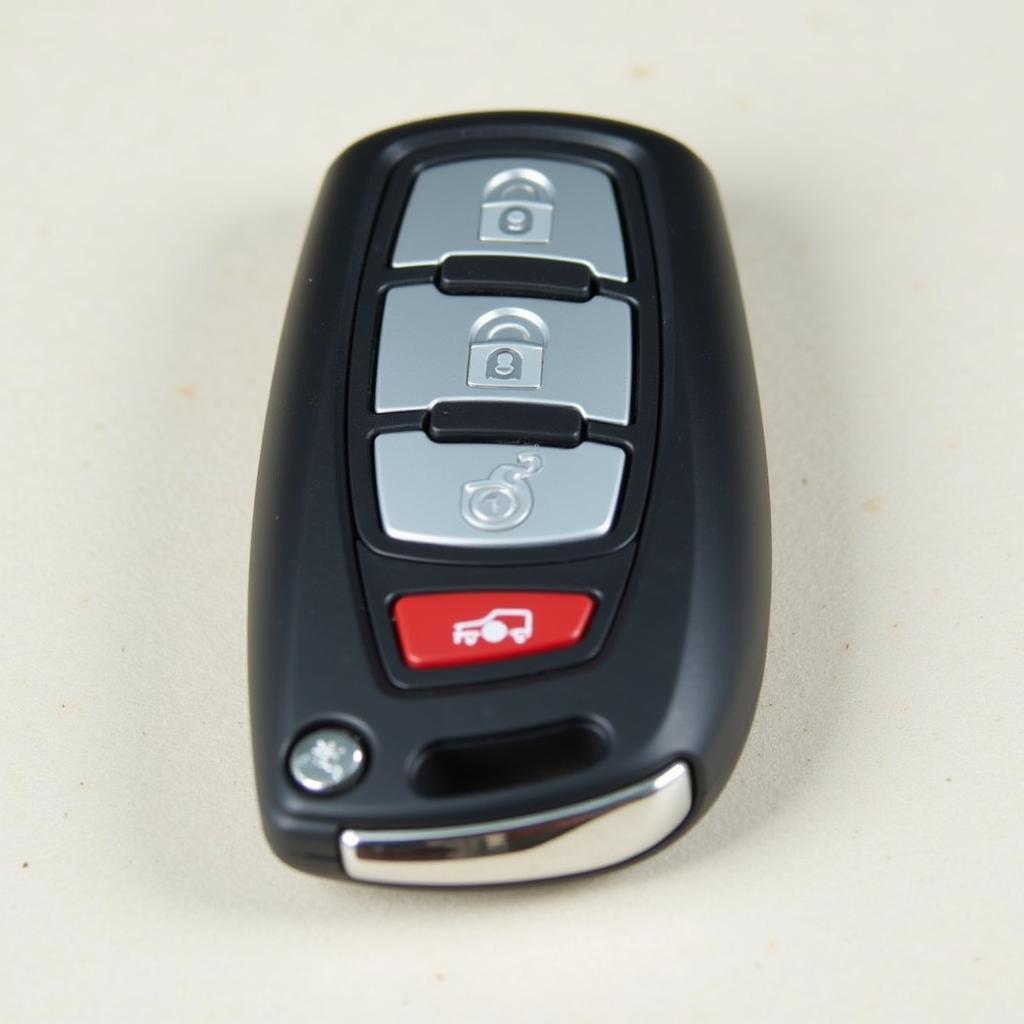Wiring a ham radio to your car stereo can seem daunting, but with the right knowledge and preparation, it’s a manageable project. This guide provides a step-by-step approach to ensure a clean and functional installation, enhancing your in-car communication experience.
 Connecting Ham Radio Power Cable to Car Battery
Connecting Ham Radio Power Cable to Car Battery
One of the first steps is choosing the right location for your ham radio. Consider factors like accessibility, visibility, and proximity to power sources. You’ll want a spot that allows you to operate the radio safely while driving. Additionally, ensure enough space for the radio unit and its associated wiring. Some prefer mounting it under the dash, while others opt for a center console installation. Remember, a clean installation not only looks professional but also prevents potential interference. If you’re uncertain about your car’s electrical system, consult a professional radio installers for cars near me.
Powering Your Ham Radio: Direct to Battery vs. Accessory Power
Choosing the correct power source for your ham radio is crucial for reliable operation. You have two main options: connecting directly to the car battery or using the accessory power circuit. Directly connecting to the battery ensures a consistent power supply, even when the ignition is off. However, it’s vital to install an inline fuse to protect your equipment. If you opt for the accessory power, your radio will only operate when the ignition is on, which can be helpful for preventing accidental battery drain.
Understanding Grounding Techniques
Proper grounding is essential for optimal ham radio performance. A poor ground can lead to interference, reduced transmission power, and even damage to your equipment. Ideally, choose a clean, unpainted metal surface on the car’s chassis close to the radio’s mounting location. Use a short, heavy-gauge wire for the ground connection to minimize resistance. Remember, a solid ground connection is as important as the power connection itself. Having trouble with your car starting? You might want to check out this article: car wont start but not battery.
Connecting the Ham Radio to Your Car Stereo
There are several ways to connect your ham radio to your car stereo, depending on your desired level of integration. You can use a simple auxiliary input, if available, for audio output from the ham radio. For a more integrated setup, consider using a dedicated interface that allows for automatic muting of the stereo during transmissions. This setup ensures clear communication without background music interference. You can find helpful information regarding car radio wiring here: wiring car radio.
Choosing the Right Cables and Connectors
Using the appropriate cables and connectors is essential for a clean and reliable installation. Ensure you use high-quality, shielded cables to minimize interference. Select connectors that are compatible with both your ham radio and car stereo. Crimp the connectors properly to ensure a secure connection and prevent signal loss. Don’t underestimate the importance of quality cabling – it can significantly impact performance. If you’ve recently installed a new ignition switch and your car won’t start, this might be helpful: new ignition switch car won t start.
Troubleshooting Common Issues
Even with careful planning, you might encounter some issues during installation. Common problems include interference, low audio output, and intermittent operation. Check all connections and grounding points to ensure they are secure. If you experience interference, try rerouting the cables away from other electrical wiring. If the audio output is low, check the volume settings on both the ham radio and the car stereo.
“A common mistake is inadequate grounding,” says John Smith, a certified automotive electrician with over 20 years of experience. “Ensure a clean, bare metal connection to the chassis for optimal performance.”
“Choosing the right power source is also critical,” adds Sarah Jones, a seasoned ham radio operator and car audio enthusiast. “Directly connecting to the battery provides a stable power supply, but always remember to include an inline fuse for protection.”
In conclusion, wiring a ham radio to your car stereo involves careful planning and execution. By following these steps and understanding the key considerations, you can enjoy clear and reliable communication on the road. Ensure proper grounding, choose the right cables, and troubleshoot any issues systematically. Remember, a properly installed ham radio enhances both your safety and enjoyment while driving.
FAQ
-
Can I wire my ham radio directly to the car’s speakers? While possible, it’s not recommended. Using the car stereo’s auxiliary input or a dedicated interface provides better control and integration.
-
What gauge wire should I use for the power connection? The specific gauge depends on the ham radio’s power requirements. Consult the radio’s manual for recommendations.
-
How can I minimize interference? Use high-quality shielded cables and ensure proper grounding.
-
Do I need a special license to operate a ham radio in my car? Yes, you’ll need an amateur radio license from your country’s regulatory agency.
-
Where can I find professional help for installation? Search online for “radio installers for cars near me” to find qualified professionals in your area.
-
What if my car radio stops working after installing the ham radio? Double-check all connections and fuses to ensure everything is properly wired.
-
Can I use a portable ham radio in my car? Yes, but using a mobile ham radio designed for car installation provides better performance and integration.


